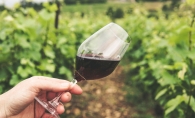For Dave Rosenquist, there isn’t just lutefisk for Christmas; it’s a season of lutefisk as far as he is concerned. The Plymouth resident, along with a group of friends—some who have known each other for more than 60 years—will have attended several lutefisk dinners held by local churches in the fall before his family hosts their own festive party during the holidays.
Lutefisk, a traditional dish in Norway, Sweden and parts of Finland, looks translucent and puffy, and is flaky and gelatinous in texture when it’s served. It starts out as dried whitefish that is reconstituted in a solution of water and lye. The lye is removed by the end of the process in a water solution.
“It’s a link to our Nordic background. It keeps me humble, knowing where we came from. Hundreds of years ago, you made do with what you had,” says Rosenquist, who grew up in Willmar. “As long as I remember, we’ve always had a lutefisk dinner.” His grandfather emigrated from Norway to Minnesota in 1899 when he was 19 years old. Rosenquist’s mother was born in 1915.
While there are a variety of ways to cook lutefisk—boiling, broiling, microwave oven and steaming—Rosenquist prefers to bake the fish in the oven and keeps a close eye on it. “If you overcook it, it turns into Jell-O. Flaky is perfect.”
He buys about six to seven pounds of fillets each year from Day Fish Company in Braham, which is about 50 miles north of Plymouth.
“You can smell it outside; there’s an unmistakable aroma,” he says. The fish arrives dried from Norway, and is reconstituted in large tubs when it gets to Braham.
To accompany the fish, Rosenquist prepares a béchamel sauce. However, most guests prefer melted butter, he says. The dinner also includes an impressive spread of Swedish meatballs, mashed potatoes, green bean casserole, scalloped corn, bread rolls, lefse (Norwegian potato flatbread), green Jell-O and krumkake, a crispy Norwegian waffle cookie. Why the green Jell-O? It’s a Lutheran tradition the family carries on.
During the meal, there is never any pressure to eat lutefisk. His wife, Karen Rosenquist, who describes herself as “not a fish person” has never tried it. “I’ve allowed it in my house. No one is forced to eat it,” she says with a laugh.
One of their sons, Scott Rosenquist, first tried the fish in his mid-teens. “In my 20s, I even began eating the leftovers,” he says, noting the tradition became more special after he moved out of state.
In the future, Scott says he hopes to carry on the holiday tradition, but will leave it to the expert in the house for now.
At the local lutefisk dinners, Dave Rosenquist, along with his friends Chuck Anderson and Richard Nordlund, are easy to spot in their matching blue bibs. The personalized bibs came about after one of the guys spilled melted butter and someone said, “He needs a bib!” Rosenquist’s bib says, “Norwedish lutefisk lover.” The three men met in elementary school in Willmar and usually take a guys’ trip to the dinner at Cambridge Lutheran Church. Then a larger group goes to the dinner at Christ Lutheran Church in Blaine.
“You don’t really eat it; you just drink it. You just let it slide on down. You either like it or you don’t,” says Richard Nordlund, a Ham Lake resident.
“I like it because I like salt, pepper and butter,” says Diane Anderson, wife of Chuck and a Blaine resident. “I joke that these guys evaluate the quality of their holiday experience by the number of lutefisk dinners they can attend.”









